Over 15.9 million people have moved during the coronavirus, according to USPS data.
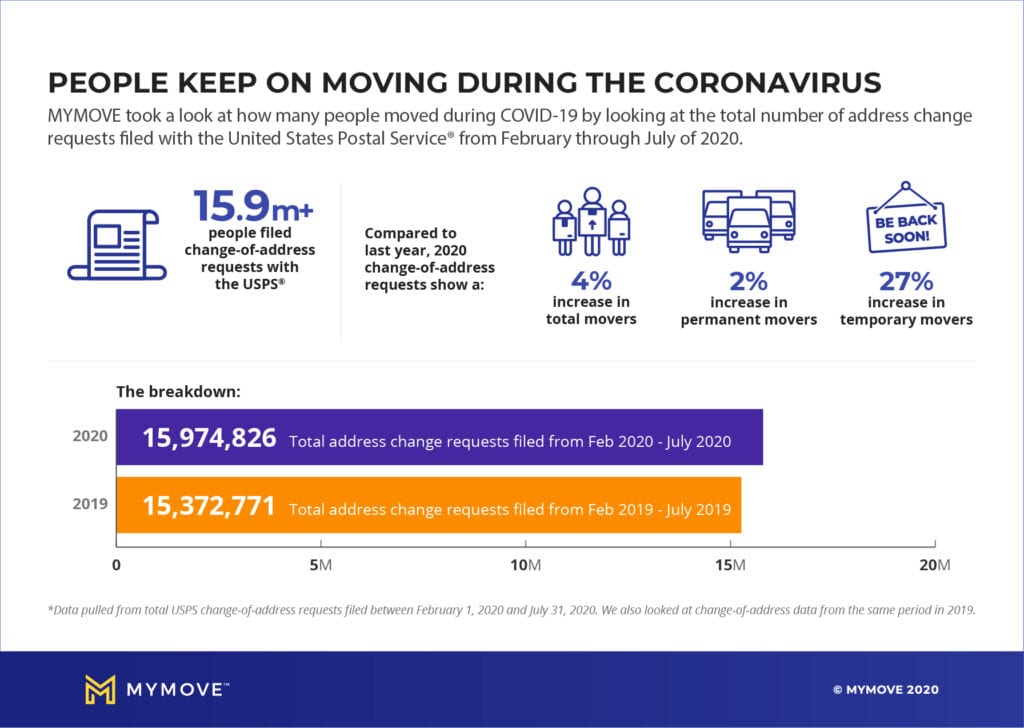
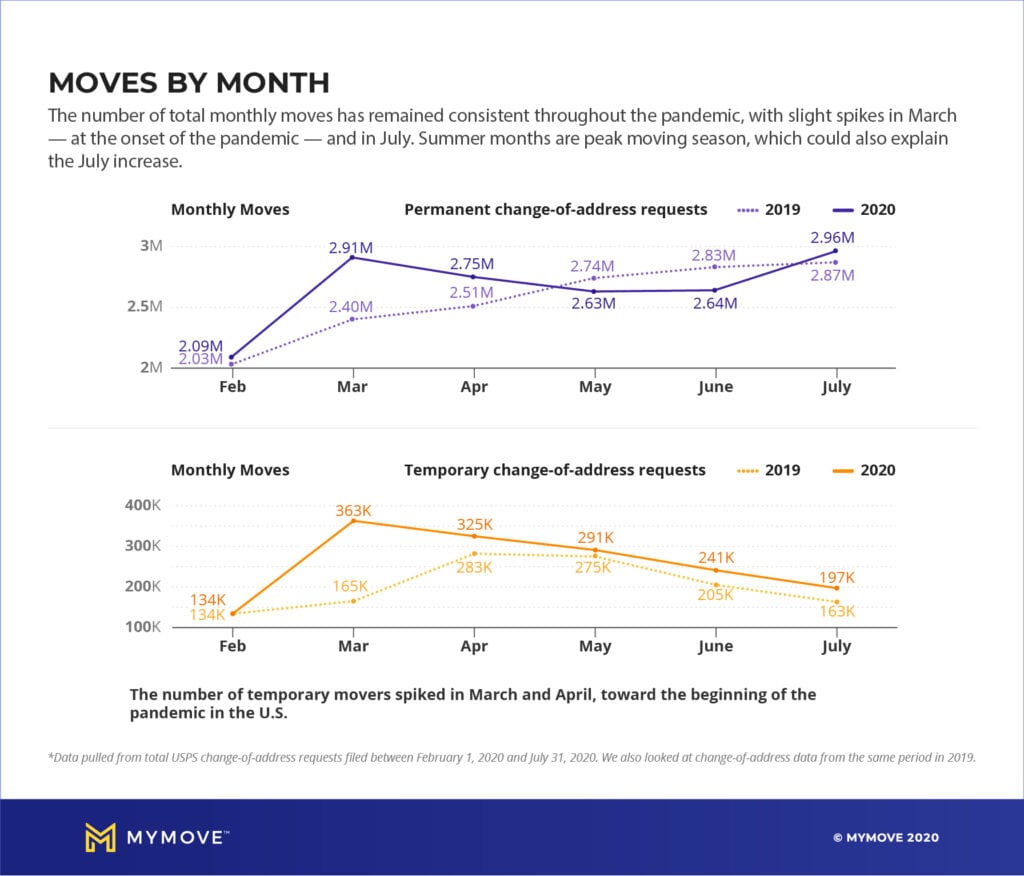
Posted on 10/13/2020 11:35:48 AM PDT by SeekAndFind
Change of address data from the United States Postal Service reveals that 15.9 million people moved between February and July this year.
How many people actually moved because of the pandemic? Though it’s hard to know movers’ exact motivations, new data reveals migration patterns during the height of Covid-19 lockdowns in most states.
Change of address data from the United States Postal Service reveals that 15.9 million people moved between February and July this year, according to MyMove, a platform that provides information for people who are relocating. MyMove analyzed data from both USPS and a Pew Research Center survey of 10,000 U.S. adults that was conducted in July.
Whether the newly relocated will stay in their new homes is less clear: The number of people who permanently moved was up by just 4 percent from the same period in 2019, while temporary moves rose by a more substantial 27 percent. Those temporary moves spiked in March and April, suggesting that people decided to be with family or relocated to a second home during the lockdowns.
“About a quarter (28%) told us [they chose to move] because they feared getting Covid-19 if they stayed where they were living,” said D’Vera Cohn, who authored the Pew survey. “About a fifth (20%) said they wanted to be with their family, or their college campus closed (23%). A total of 18% gave financial reasons, including job loss.”
The USPS data also showed that many people who moved left densely populated urban areas in favor of less-densely populated areas.
Manhattan saw the biggest increase in moves, with 110,978 people departing — a 500 percent increase compared to the same period in 2019. Brooklyn followed, losing 43,006 people during the same time period. Residents of Chicago, San Francisco, Los Angeles, Naples, Florida, Washington, D.C. and Houston also saw large drops in population during that period.
While it remains to be seen if the urban-to-suburban exodus will be a long-term thing, USPS data shows that many city dwellers did relocate to smaller, less urban areas. Two suburbs of Houston — Katy and Richmond — gained 4,400 and 3,000 new residents, respectively.
East Hampton, New York, also saw an influx of nearly 2,500 residents. In March, as government-mandated lockdowns set in, real estate brokers in the Hamptons said that a run on pricey rentals led to bidding wars for some properties.
The exodus from Manhattan led to a historic vacancy rate of 5 percent in September after setting a new record for each of the four preceding months.
If the vacancy rate stays that high, it could potentially lead to the repeal of the city’s rent regulations, which depends on a vacancy rate below 5 percent. That threshold, however, is set by legislators, and a new Housing & Vacancy Survey is not scheduled to be conducted until 2022.
New York was infected and spread it.


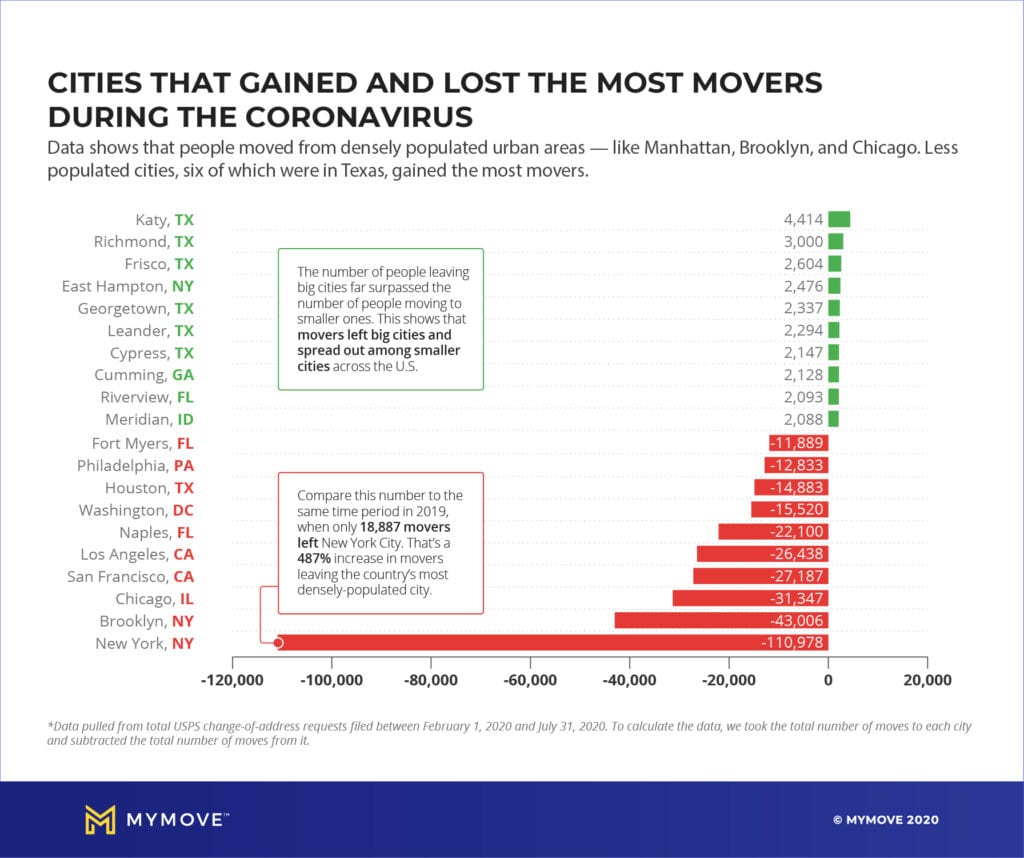
[[reveals that 15.9 million people moved]]
I think they all moved to our town for the summer- it was insane-
And that trend isn’t unique to the Big Apple. When you take a look at 2020’s 10 most moved-out-of cities and compare them to the previous year, you see that the list remains relatively consistent. Eight of the 10 cities make both lists.
| 2020 Top Cities Ranking | Number of movers the city lost in 2020 | Compared to 2019 | Number of movers the city lost in 2019 |
|---|---|---|---|
| 1. New York, NY | -110,978 | New York ranked #2 in 2019 | -18,887 |
| 2. Brooklyn, NY | -43,006 | Brooklyn ranked #6 in 2019 | -10,144 |
| 3. Chicago, IL | -31,347 | Chicago ranked #3 in 2019 | -15,278 |
| 4. San Francisco, CA | -27187 | San Francisco ranked #7 in 2019 | -9,683 |
| 5. Los Angeles, CA | -26,438 | Los Angeles ranked #4 in 2019 | -13,474 |
| 6. Naples, FL | -22,100 | Naples ranked #1 in 2019 | -27,202 |
| 7. Washington, DC | -15,520 | D.C. did not rank in the top 10 list for 2019. It ranked #26. | -5,896 |
| 8. Houston, TX | -14,883 | Houston ranked #8 in 2019 | -9,106 |
| 9. Philadelphia, PA | -12,833 | Philadelphia did not rank in the top 10 list for 2019. It ranked #13. | -7,853 |
| 10. Fort Myers, FL | -11,889 | Fort Myers ranked #5 in 2019 | -13,359 |
New York liberals were the super spreaders.
| 2020 Top Cities | 2020 Net Gain | 2019 Top Cities | 2019 Net Gain |
|---|---|---|---|
| Katy, TX | 4,414 | Frisco, TX | 3,224 |
| Richmond, TX | 3,000 | Richmond, TX | 2,448 |
| Frisco, TX | 2,604 | Las Vegas, NV | 2,349 |
| East Hampton, NY | 2,476 | Meridian, ID | 2,221 |
| Georgetown, TX | 2,337 | Katy, TX | 2,109 |
| Leander, TX | 2,294 | Georgetown, TX | 2,019 |
| Cypress, TX | 2,147 | Livingston, TX | 2,012 |
| Cumming, GA | 2,128 | Leander, TX | 1,978 |
| Riverview, FL | 2,093 | Cumming, GA | 1,969 |
| Meridian, ID | 2,088 | Cypress, TX | 1,813 |
Six of the ten cities that had the highest net gain of movers during COVID-19 were in Texas. Based on the factors of why people are leaving the large urban centers, Texas provides many attractive features, such as lower cost of living, a variety of smaller towns, and plenty of open space.
But it’s important to note that the net losses experienced by big cities eclipsed the net gains experienced by the smaller cities. It’s more likely that residents relocating from big cities didn’t move en masse to Texas. Rather, they spread out to smaller areas across the country.
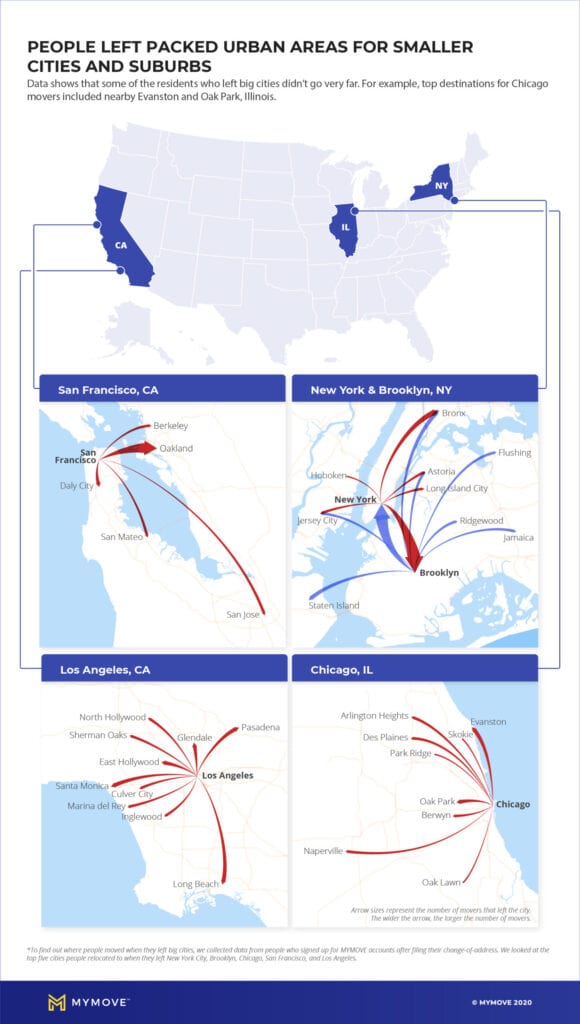
What the heck is so bad about Naples, FL???
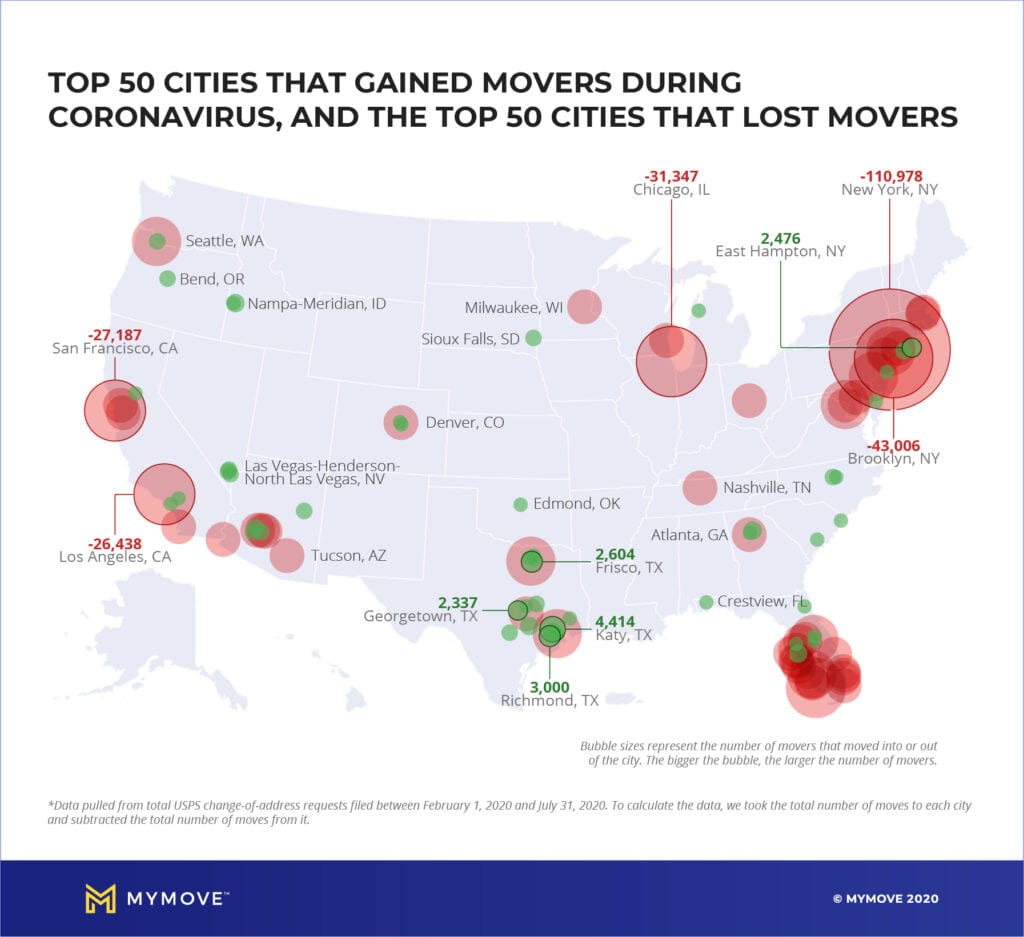
People leaving Naples and Ft Myers??
There has to be an interesting explanation.
RE: What the heck is so bad about Naples, FL???
Might be because it has become too pricey to live and people are looking for a less expensive alternative ( you can’t pay the rent or property tax when you’re out of work ).
We are in the process of moving from a blue state nightmare (Illinois) to a red state (Wyoming). The ridiculous lockdown rules in Illinois are the main reason, followed by taxes and a state government run by Chicago democrats. We are retired, and we started our house search back in April right after the lockdown started. I can’t wait to escape from Illinois!
This short video could provide some explanation:
https://www.youtube.com/watch?v=w2ws8GLyZjs
10 Reasons People Are Moving OUT of Naples,Florida
I was wondering the same thing ... Ft. Myers, too. Something’s fishy about that, though: the 2018 population was around 22,000. Ft. Myers is at 82K.
Personally, I moved, too: a distance of 15.4 miles.
Wow. I’d appreciate an update in a few months if you remember.
Loss in Naples not good for GOP in Florida.
Interesting.
What’s up with Naples’ data? They lose their entire population each year and each year it comes back? It’s worse than El Paso!
Disclaimer: Opinions posted on Free Republic are those of the individual posters and do not necessarily represent the opinion of Free Republic or its management. All materials posted herein are protected by copyright law and the exemption for fair use of copyrighted works.